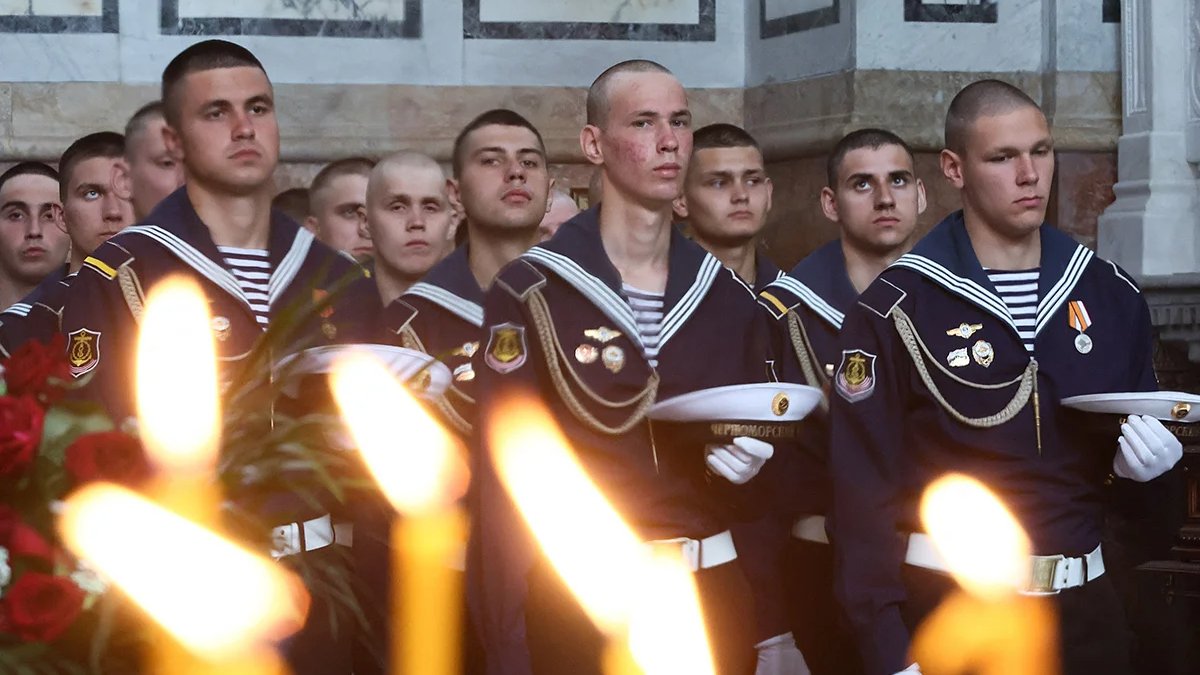The Russian Black Sea Fleet is currently in a state of severe crisis, the subject of almost daily coverage in the country’s press and a talking point among military analysts. Since the start of Russia’s invasion of Ukraine, the fleet has lost several of its most important ships, including its flagship cruiser, the Moskva, in April 2022, taking its combat capability with it. To make matters worse, there is also a very rapid turnover of personnel within the fleet’s high command.
In early April, Vice Admiral Sergey Pinchuk was appointed the new commander of the Black Sea Fleet, replacing the benighted Admiral Viktor Sokolov, whose alleged involvement in attacking Ukrainian power plants and other civilian infrastructure earned him an arrest warrant from the International Criminal Court in March.
The last nail in Sokolov’s coffin was the Ukrainian sinking of the amphibian landing ship Caesar Kunikov in mid-February, after which he was promptly dismissed. However, the Kremlin’s problem is less one of incompetent admirals, and more one of the once formidable Black Sea Fleet now being technically unfit for purpose and suffering major losses.
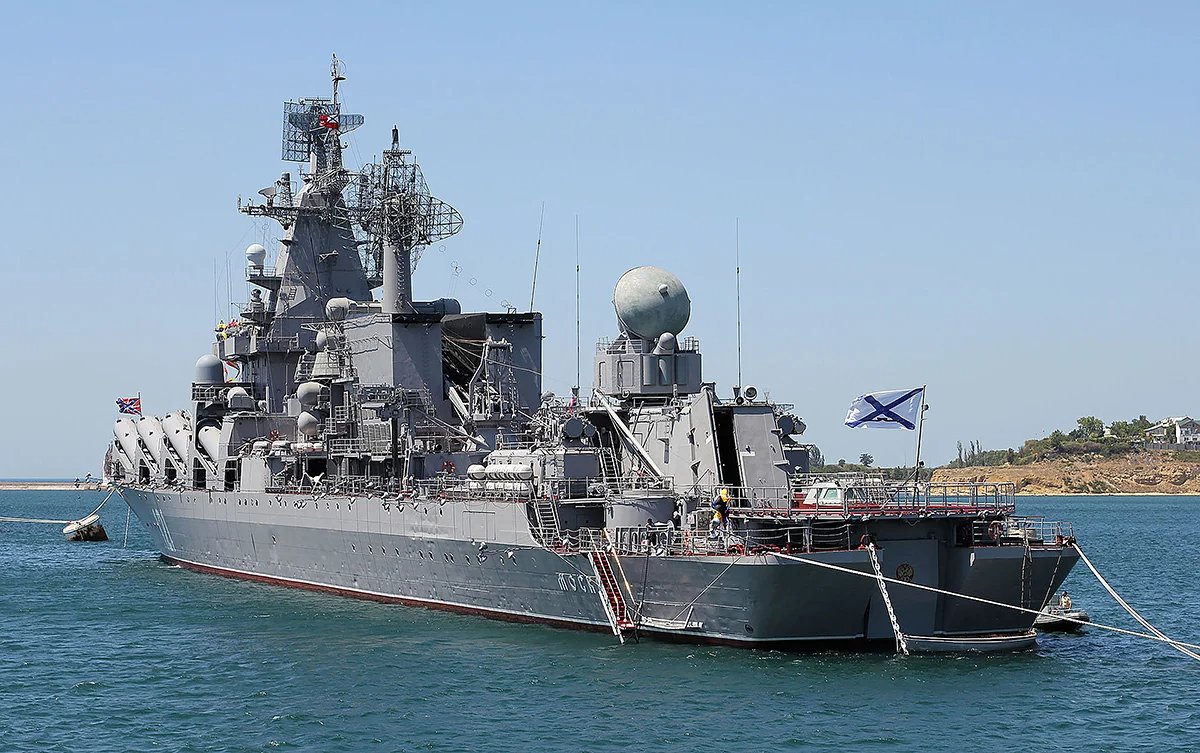
The cruiser Moskva in Sevastopol Bay, 2012, 10 years before it was sunk by Ukrainian forces soon after Russia’s full-scale invasion. Photo: Georgy Chernilevsky, public domain / wikimedia.org
British Defence Minister Grant Shapps said in 2023 that Ukrainian forces had destroyed up to 20% of the Black Sea Fleet in a matter of months. Ukrainian military expert Pavlo Lakiychuk from the Strategy XXI Centre for Global Studies think tank in Kyiv, however, cast doubt on this assessment, telling Novaya Gazeta Europe that it made no sense to talk about losses in terms of percentages and that whether or not the fleet could do its job was far more significant. He said the Black Sea Fleet had lost 75% of its capacity, which meant it had effectively been neutralised. The situation had become so bad by late 2023 that the fleet had to be relocated from the ports in Crimea where it had been based for 240 years, to the southern Russian port city of Novorossiysk.

Historian Nikolay Mitrokhin. Photo: mosyabloko.ru
This fact is particularly galling to Moscow, given Ukraine was apportioned only a small part of the Soviet Black Sea Fleet following the collapse of the USSR, and even much of that was sold off for scrap in the 1990s, while what remained eventually ended up in Russian hands following the Kremlin’s annexation of Crimea in 2014.
Historian Nikolay Mitrokhin of the University of Bremen’s Research Centre for East European Studies told Novaya Europe how the Black Sea Fleet was divided up and the role it has played in the recent history of annexed Crimea.
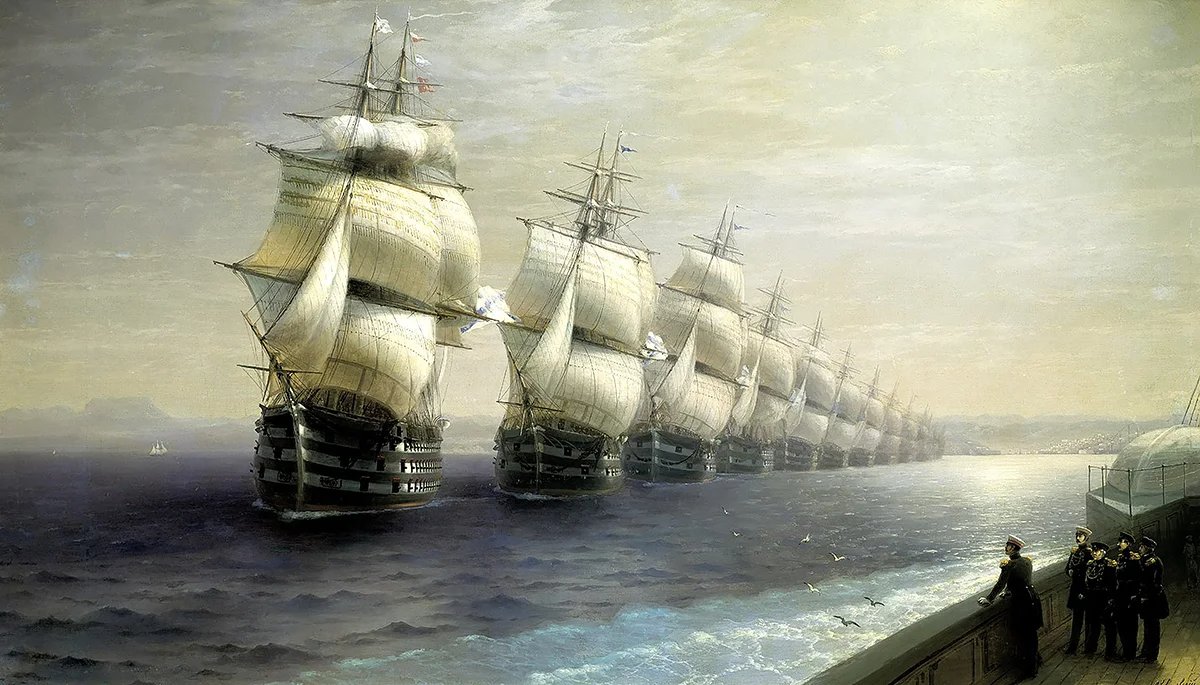
Photo reproduction of painting “Review of the Black Sea Fleet in 1849”, by Ivan Aivazovsky, 1886. Public Domain Source: wikimedia.org
Dividing the spoils
It was chiefly down to Russia and Ukraine to decide how to split the spoils of the Soviet naval legacy. Georgia, the other republic that was home to part of the Black Sea Fleet, was preoccupied with its own civil war in Abkhazia and was an economic basket case mired in corruption in the early 1990s. Economic considerations were key when dividing up the fleet as maintaining even a small part of the vast Soviet naval armada was an incredibly expensive undertaking.
“When the USSR collapsed, Ukraine hoped to take possession of the Black Sea Fleet as the ‘divorce’ settlement in place at the time foresaw each republic inheriting whichever military and naval units were based within its borders. However, it was clear Ukraine wouldn’t be able to maintain it, because a navy is one of the most costly sectors of any defence system.”
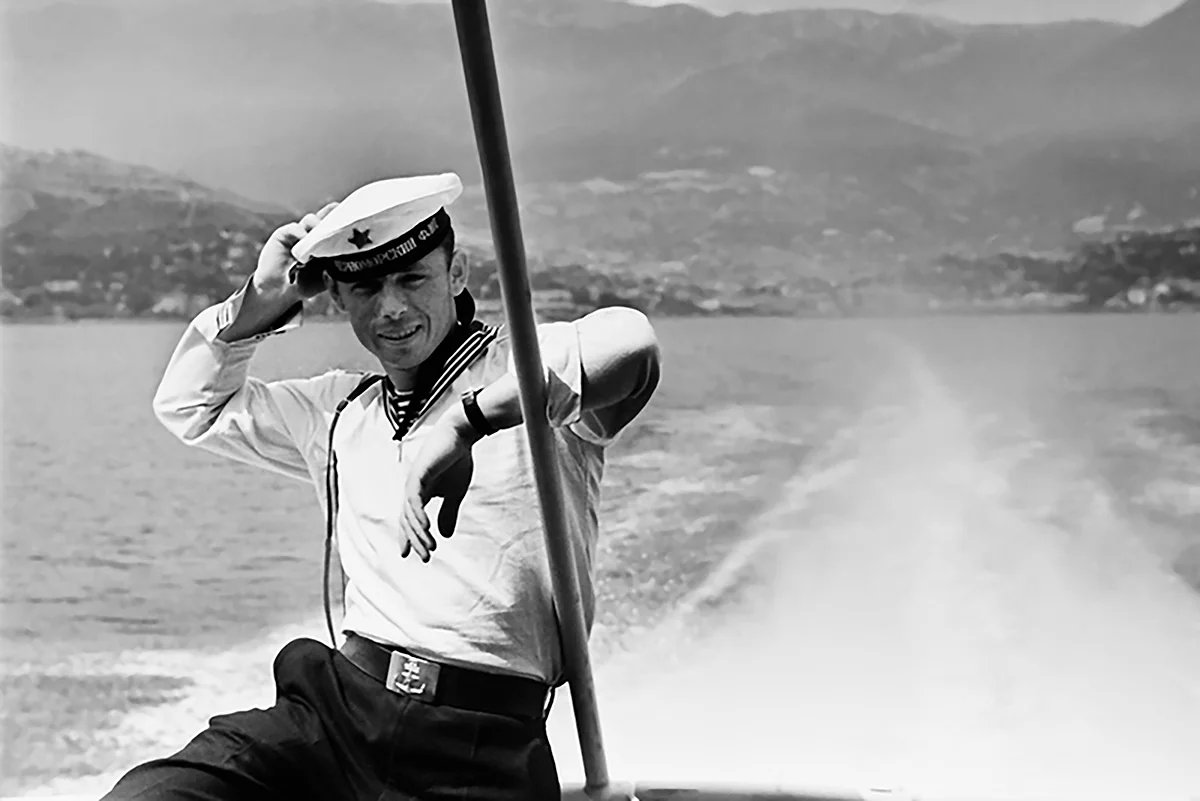
Black Sea Fleet sailor, 1966. Photo: Ion Chibzii (CC BY-SA) / wikimedia.org
In the summer of 1991, before the signing of the Belavezha Accords which consigned the Soviet Union to history, Ukraine’s parliament, the Verkhovna Rada, approved a resolution stating that all military personnel stationed in the country were to be formally reassigned to Ukraine.
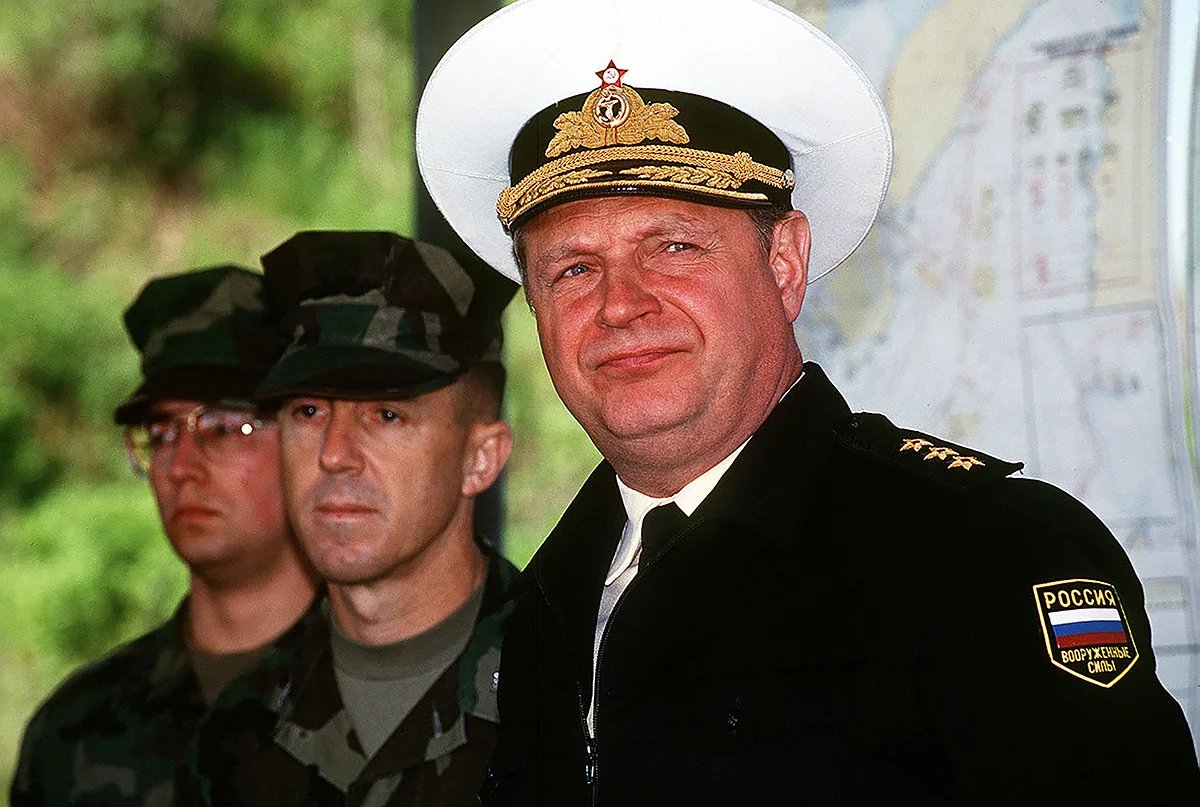
Admiral Igor Vladimirovich Kasatonov, Commander of the Russian Navy’s Black Sea Fleet, 1991—1992. Photo: Charles W. Alley (Public Domain) / wikimedia.org
Admiral Igor Kasatonov, the Black Sea Fleet’s de jure commander from autumn 1991 to autumn 1992, played an important role in ensuring that did not happen. In a 2015 interview with Rodia magazine, Kasatonov recalled that as the curtain fell on the Soviet era, the fleet numbered 833 ships and almost 100,000 officers and sailors from all over the Soviet Union.
Kyiv’s main problem was that most of the navy rank and file was loyal to Moscow, and Kasatonov refused to swear an oath to Ukraine, despite the fact that “Moscow remained stubbornly silent” and issued no specific orders. “Alas, in 1991, at the most difficult of times, I couldn’t get through to the Russian president. … Yeltsin’s entourage didn’t care about the Black Sea Fleet. They were too busy carving up power among themselves!” he told Rodina.
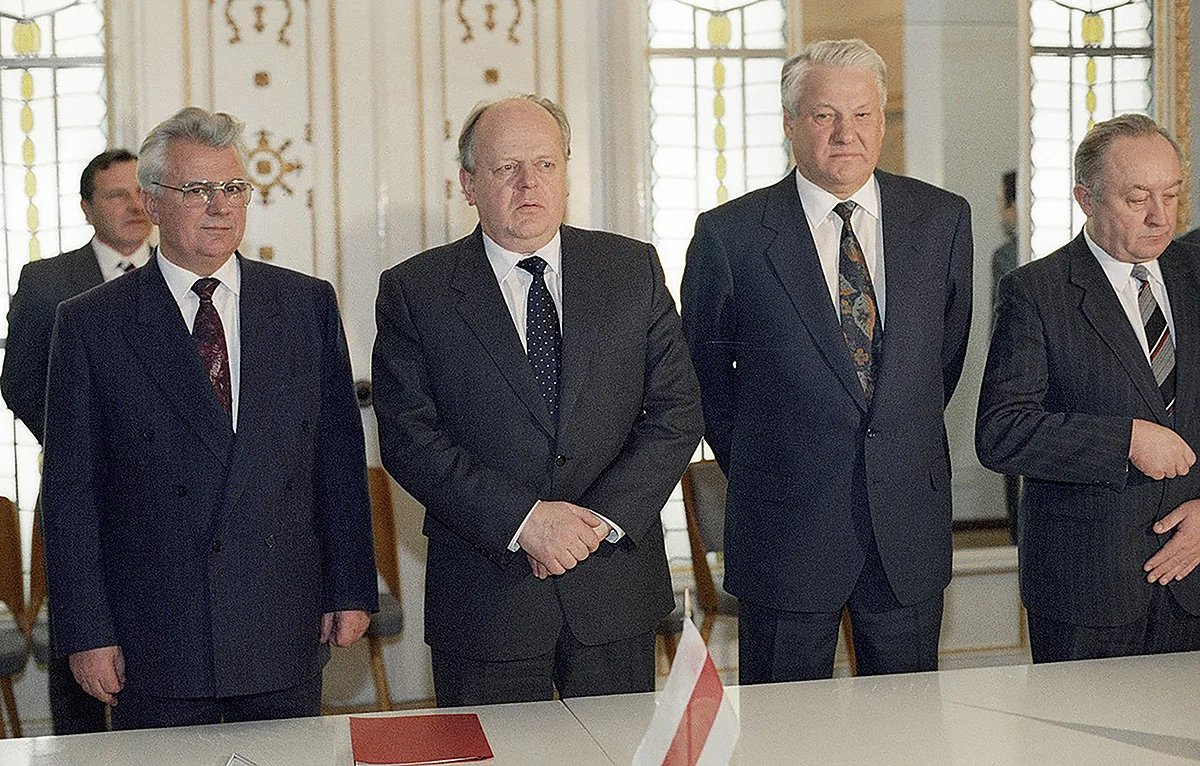
Leonid Kravchuk, Stanislav Shushkevich, Boris Yeltsin, Vyacheslav Kebich, 1991. Photo: Yury Ivanov (CC-BY-SA 3.0) / wikimedia.org
Discontent was also brewing within the fleet, according to Kasatonov. Seeing Moscow’s indifference, many sailors hoisted Ukrainian flags over their ships. Kasatonov and his officers put down any attempts to switch the fleet’s allegiance to Ukraine, however. Sometimes this was done using brute force, while removing disloyal people from their posts was sufficient at others.
On 9 January 1992, the admiral told the Verkhovna Rada he considered it “criminal to swear allegiance to a foreign state”, causing a public outcry that, according to Kasatonov, finally forced Yeltsin to address the issue. On 28 January, the president met Kasatonov on the Moskva anti-submarine cruiser. The admiral recalls that without delving too deeply into the issue, Yeltsin supported his position, and even left a message in the ship’s visitors’ book reading: “Sailors of the Black Sea Fleet! Do not waver at this difficult time for the CIS! I will support you! President Yeltsin.”
But Yeltsin’s support alone was insufficient to bring the fleet fully under Russian command. So Moscow began to search for a solution.
On 5 April 1992, Ukrainian President Leonid Kravchuk signed a decree creating the Naval Forces of Ukraine from the Black Sea Fleet. In response, two days later Yeltsin signed his own decree ordering the Black Sea Fleet to be transferred to Russian control. Representatives of both countries repeatedly met in an attempt to broker an agreement, but without success. According to Mitrokhin, the process was strongly influenced by the explosive situation developing in Crimea, where locals disturbed at the idea of becoming Ukrainian became more and more outspoken. In addition, separatist sentiments were fuelled by a fear of the return of the Crimean Tatars, whom the Soviet government had deported en masse to Central Asia in 1944.
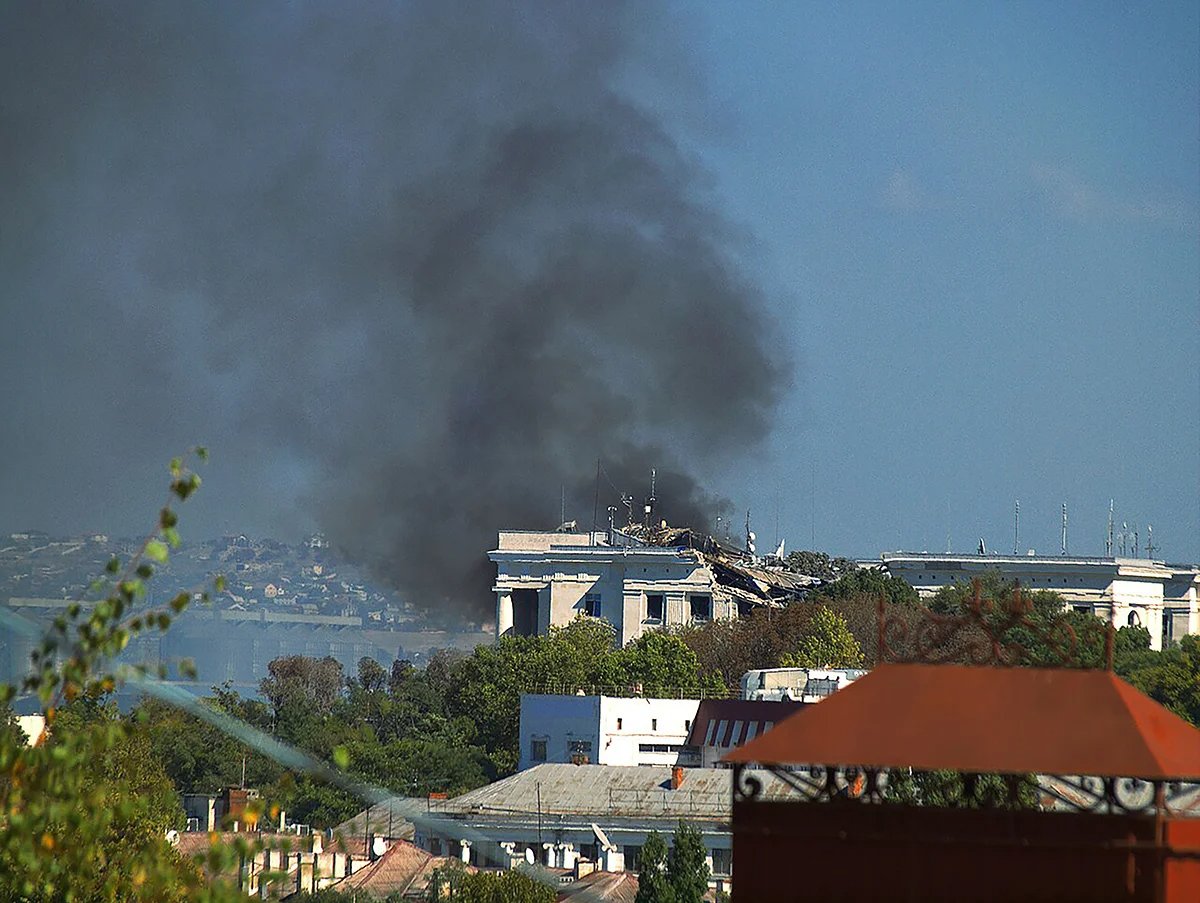
The aftermath of a cruise missile strike on the historic headquarters of the Black Sea Fleet in Sevastopol, 22 September 2023. Photo: Ivanov (CC-BY-SA 3.0) / wikimedia.org
Under the terms of agreements signed between the two countries in 1995, Russia received 338 ships, 106 aircraft and helicopters, the main ammunitions arsenal, a Black Sea Fleet missile base, an amphibious training ground, two airfields, and up to 20–30% of the entire infrastructure of the Black Sea Fleet. There were also a number of restrictions, such as Russia not mounting nuclear weapons on vessels of the Black Sea Fleet in Ukrainian territory. Ukraine received 30 warships and boats, one submarine, six special purpose ships, 28 support vessels and 90 combat aircraft.
The Crimea question
While Russia and Ukraine managed to avoid going to war over Crimea and the Sevastopol-based fleet in the 1990s, the problem certainly didn’t go away and the peninsula remained a tense flashpoint for bilateral relations. Any escalation could have led to bloody conflict, as a result of which Ukraine might not only have lost the fleet and the base in Sevastopol, but the entire Crimean peninsula. The fate of the fleet was of greater interest to the sailors themselves than to Russian politicians, however. And so it remained, Mitrokhin believes, until Moscow Mayor Yury Luzhkov and his adviser Konstantin Zatulin turned their attention to the peninsula.
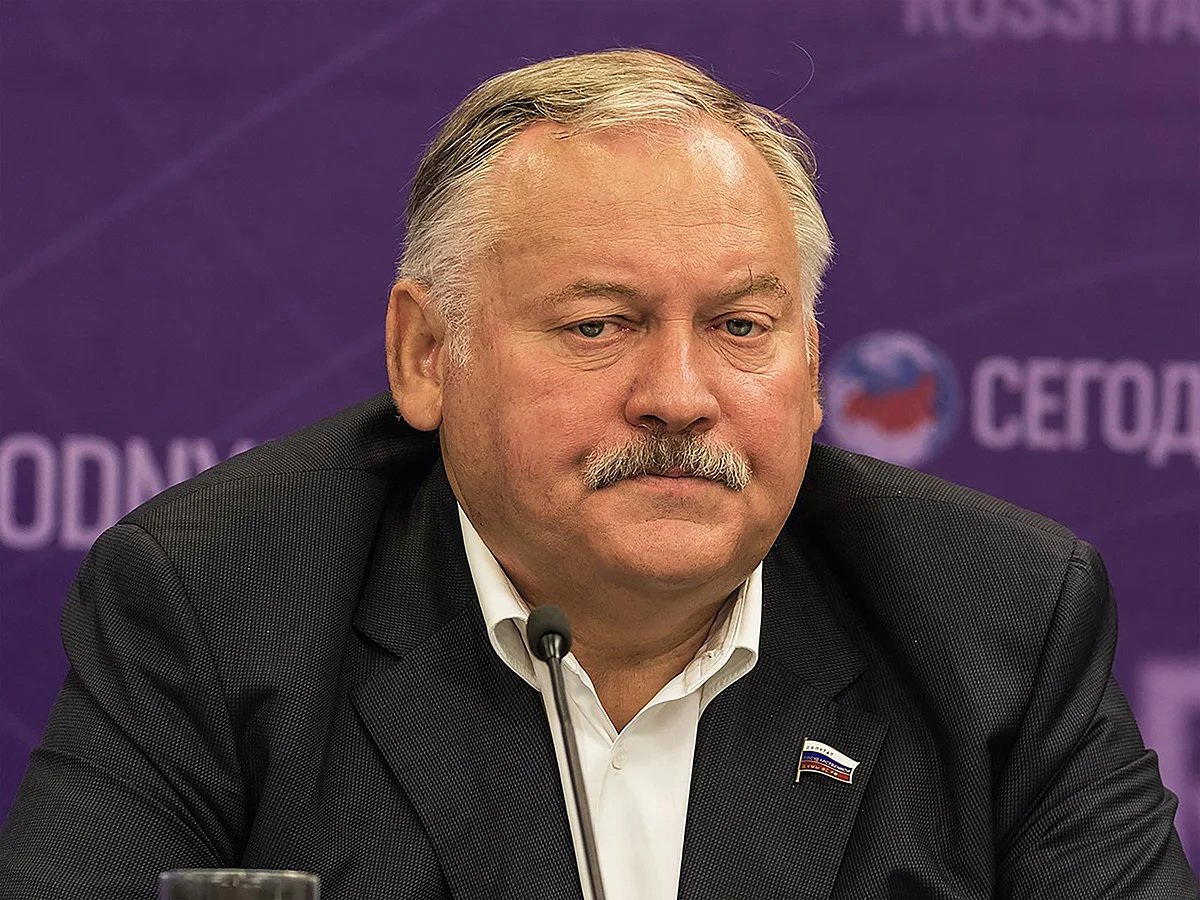
Konstantin Zatulin. Photo: Alexander Savin (licensed under Free Art) / wikimedia.org
“In around 1994, at the behest of Zatulin, Moscow Mayor Yury Luzhkov, who already had presidential ambitions, began to take an interest in Crimea. In 1996, Luzhkov created The Institute of CIS Countries (Institute of Diaspora and Integration) think tank [established by Moscow to support Russian interests in the former USSR], and appointed Zatulin as its head. All of a sudden, the city of Moscow was the Black Sea Fleet’s main sponsor,” Mitrokhin explains. Luzhkov was now a large-scale investor and declared Sevastopol to be a part of Russia, much to Kyiv’s annoyance.
Mitrokhin recalls the tensions brewing on the peninsula, though the powder keg was only truly lit in 2014 when the Maidan Revolution took place in Kyiv and Ukrainian President Viktor Yanukovych fled to Russia. In Sevastopol, many perceived the events in the capital as a coup d’état and a signal to act, though that was not the case elsewhere on the peninsula, Mitrokhin stresses. In Sevastopol, home to a large number of current and retired Russian naval officers alike, pro-Russian sentiment was overwhelmingly widespread, as it continues to be today, but that wasn’t the case in other cities on the peninsula.
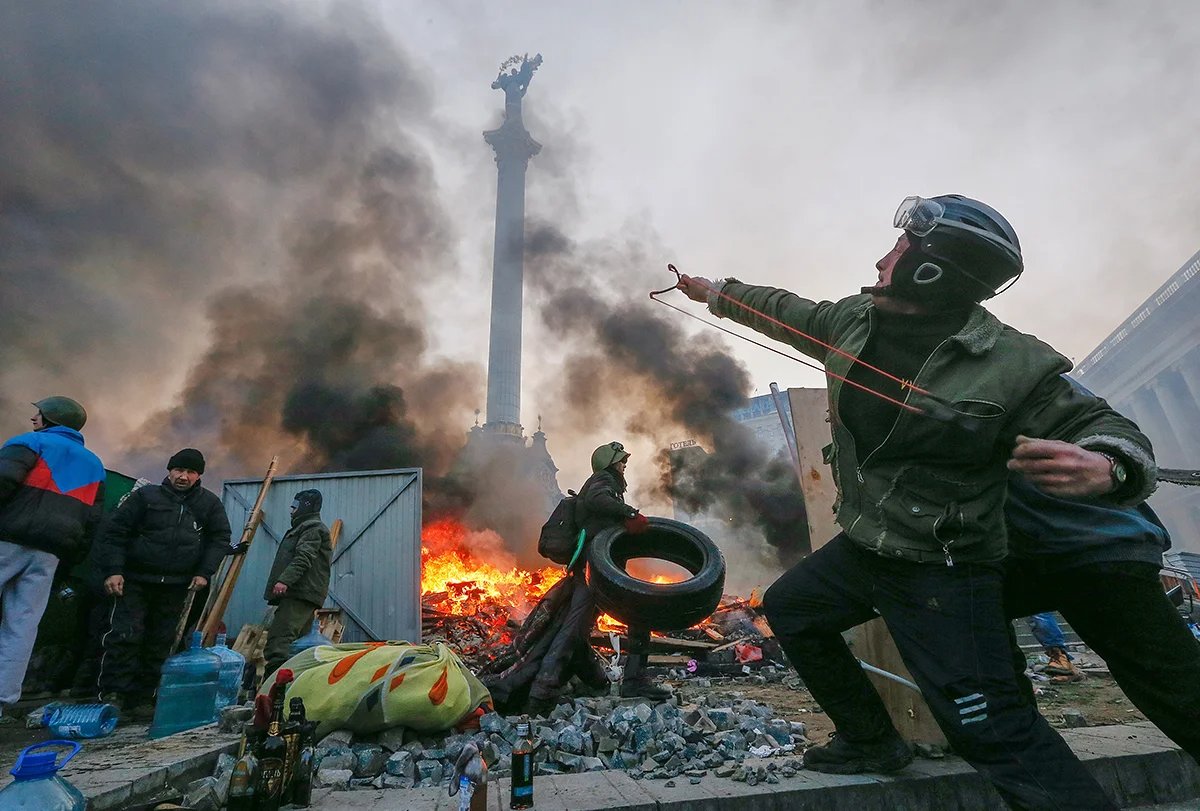
Euromaidan. A protester clashing with police in central Kyiv, Ukraine, 19 February 2014. Photo: Sergey Dolzhenko / EPA
Mitrokhin says officials in the regional capital Simferopol, as well as other large Crimean towns including Yalta, Alushta and Armiansk nevertheless remained loyal to Kyiv to the end, while residents of each were divided in their allegiance.
Some officials, pro-Ukrainian Crimean Tatars, the wives and relatives of Ukrainian soldiers and some young people came out against becoming part of Russia. But these groups felt powerless when faced down by naval veterans and pro-Russian separatists who rapidly came to believe that the fate of the peninsula was in their hands.
The Security Service of Ukraine (SBU) being so slow to react to the annexation of Crimea in 2014 also played a role, Mitrokhin believes. “Quite what the SBU was up to was a total mystery, though it became clear when almost the entire local SBU staff became part of the Russian FSB after the occupation.” In total, 1,400 SBU staff joined Russia’s FSB after 2014.
The future of the fleet
The Black Sea Fleet was given four main objectives in Russia’s full-scale invasion of Ukraine, according to Lakiychuk: to blockade Ukrainian ports, to provide ground forces with assistance from the sea, to conduct naval landing operations, and to launch missile strikes on strategic targets inside Ukraine. While the fleet is still capable of launching missile strikes, it no longer has the operational capacity to perform the remaining tasks, according to Lakiychuk.
Mitrokhin largely agrees, saying the fleet outlived its purpose once Turkey, a potential Russian enemy, acquired anti-ship missiles and unmanned boats. In the event of conflict with Turkey and NATO, the Black Sea Fleet would be unable to defend itself.
Mitrokhin says the fleet’s fate depends on the course of the war, and even suggested that Ukrainian attacks could destroy it altogether, forcing Russia either to abandon the idea of having a naval presence in the Black Sea at all or to rebuild it from scratch. Even if the fleet survives the war, Mitrokhin says, it will most likely find itself entering the final chapter of its long history, destined to assume the role of a coast guard, protecting Russian waters from pirates or illegal fishing, but doing little more than that.
Join us in rebuilding Novaya Gazeta Europe
The Russian government has banned independent media. We were forced to leave our country in order to keep doing our job, telling our readers about what is going on Russia, Ukraine and Europe.
We will continue fighting against warfare and dictatorship. We believe that freedom of speech is the most efficient antidote against tyranny. Support us financially to help us fight for peace and freedom.
By clicking the Support button, you agree to the processing of your personal data.
To cancel a regular donation, please write to [email protected]
